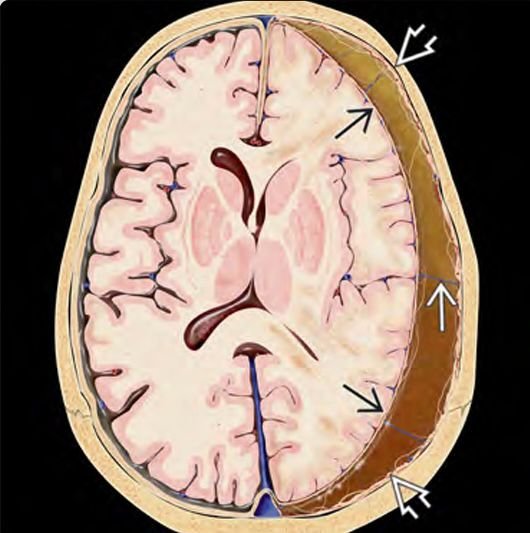Blunt Force Injury
Blunt Force Injury
Blunt force injury (BFI) in children refers to traumatic injuries caused by impact with a non-penetrating object or surface, leading to damage of internal tissues, organs, and the skeletal or nervous system without breaking the skin. In Bangladesh, blunt trauma in children is frequently caused by road traffic accidents, falls, physical abuse, and domestic accidents. The consequences can be severe, especially when the brain or spine is involved, and often require urgent neurosurgical care. Dr. Md. Nafaur Rahman specializes in the surgical management of blunt traumatic injuries in the pediatric population, offering advanced treatment and long-term rehabilitation support for affected children. Causes of Blunt Force Injury in Children (Bangladesh Perspective) Blunt injuries in children are commonly caused by: Road Traffic Accidents (RTAs) – Often involving motorcycles or rickshaws Falls from height – rooftops, staircases, trees Assault or child abuse – including Shaken Baby Syndrome and physical violence Playground accidents – swings, slides, sports injuries Crushing injuries – from doors, heavy objects, or during natural disasters Due to poor urban planning, lack of road safety, and minimal supervision in many areas of Bangladesh, these injuries are unfortunately common and often underreported. Common Types of Blunt Force Injuries in Children 1. Blunt Head Trauma Skull fractures Concussions Contusions or cerebral hematomas Diffuse axonal injury (DAI) Subdural or epidural hematomas 2. Spinal Injuries Vertebral fractures Spinal cord compression or hemorrhage Ligamentous injuries 3. Thoracoabdominal Trauma Rib fractures Pulmonary contusion Liver, spleen, or kidney lacerations (less common but serious) Signs and Symptoms of Blunt Force Injury in Children Symptoms depend on the location and severity of injury: Head injury: Vomiting, headache, seizures, unconsciousness, unequal pupils, irritability Spinal trauma: Neck or back pain, limb weakness, paralysis, bladder/bowel issues Internal injury: Abdominal swelling, low blood pressure, pale skin, shock Behavioral signs: Lethargy, sleepiness, or sudden drowsiness after a fall or accident Any such signs warrant immediate medical evaluation by a pediatric trauma or neurosurgical specialist. Diagnostic Process Dr. Md. Nafaur Rahman follows a structured diagnostic protocol, including: Clinical neurological assessment using GCS (Glasgow Coma Scale) Imaging Studies: CT scan of the brain/spine for fractures, bleeds, or swelling MRI for diffuse axonal injury, spinal cord damage, or subtle contusions X-rays and ultrasound in abdominal trauma cases Early and accurate diagnosis is critical for deciding whether surgical intervention is required or if the injury can be managed conservatively. Treatment Approach in Bangladesh Neurosurgical Interventions by Dr. Md. Nafaur Rahman Craniotomy for hematoma evacuation (subdural, epidural, intracerebral) Decompressive craniectomy in cases of severe brain swelling VP shunt placement in post-traumatic hydrocephalus Spinal fixation or decompression for vertebral fractures Neuro-monitoring and post-operative care in critical care units Non-Surgical Management ICU monitoring for mild to moderate concussions Medications for seizures, brain swelling, or pain Physiotherapy and rehabilitation for recovery of function Long-Term Complications If not managed properly, blunt force injuries in children can lead to: Permanent neurological disability Spasticity or weakness in limbs Cognitive delay or behavioral changes Chronic seizures Post-traumatic hydrocephalus In Bangladesh, delayed treatment or reliance on non-specialized care can worsen these outcomes. Therefore, early referral to a pediatric neurosurgical expert like Dr. Nafaur Rahman is essential. Social and Public Health Impact in Bangladesh Lack of road safety measures, helmets, and seat belts for children Inadequate trauma response in rural healthcare settings Cultural stigma around child abuse and failure to report non-accidental trauma Limited access to pediatric neurosurgical facilities outside major cities Financial challenges limiting rehabilitation access for poorer families Public health education and investment in trauma care systems are vital to reduce the burden of blunt force injuries in Bangladesh. Why Dr. Md. Nafaur Rahman? Extensive experience in treating blunt traumatic injuries in children Pioneer in pediatric neurosurgery at NINS and Bangladesh Paediatric Neurocare Centre Access to advanced imaging and surgical equipment Offers integrated care involving ICU support, surgery, rehabilitation, and follow-up Advocates for trauma prevention and child safety education in Bangladesh Contact for Consultation or Emergency Dr. Md. Nafaur Rahman Assistant Professor, Department of Pediatric Neurosurgery National Institute of Neurosciences & Hospital (NINS) Chief Consultant, Bangladesh Paediatric Neurocare Centre 📞 Serial / Emergency Contact 📱 01912988182 | 01607033535 🌐 Website: www.neurosurgeonnafaur.com
YouTube Videos and Patient Reviews on Blunt Force Injury










